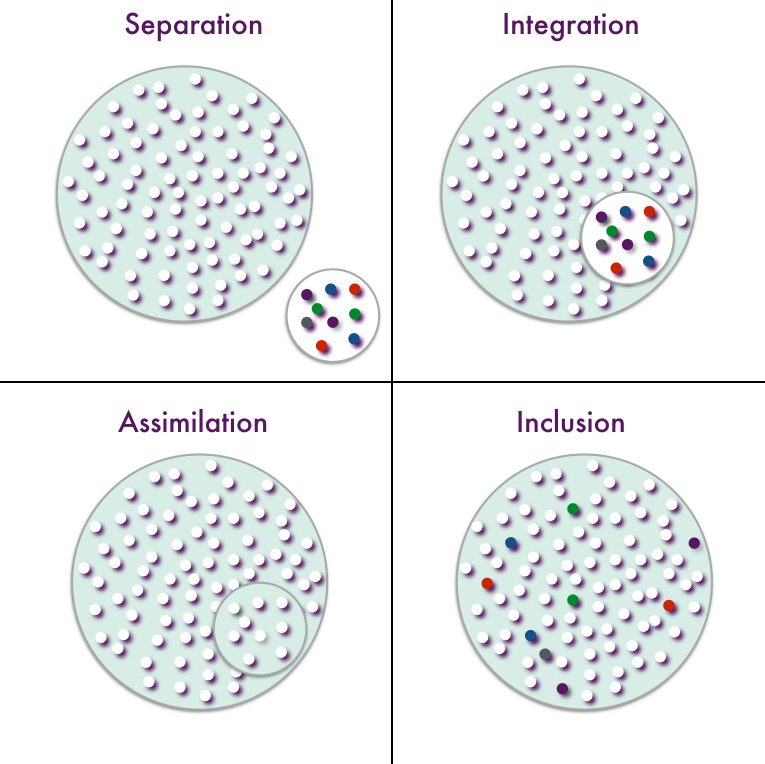
What’s the problem with diversity ?
The other day, Katrien and I met with two customers : a big bank and an advertising agency. At the bank, all the guys sported a slick, clean shaven look. At the advertising company we had landed in hipster-beard city.
When we talk with companies about diversity, they usually focus on the collaboration between differences of age, gender, race, sexual orientation, physical elements, religious or cultural backgrounds.
Defining diversity like this, turns into matters of ‘ticking off the boxes’, adhering to the appropriate laws and ensuring your recruitment site displays a couple of appealing slogans.
I think of diversity in a much broader sense. The most effective team I ever worked for contained an architect, a doctor, an art historian, two economists, engineers and a whizz kid who hadn’t even finished high school.
The youngest was 28, de oldest 57. Our task was to provide technical support to customers of a big IT company. I believe that our team was strong thanks to our very diverse background and experience.
Most companies are already convinced about the fact that diverse teams add value. It’s not just about ‘visible differences’ but also about ‘different ways of thinking’. Companies who succeed in using diversity in such a way that it indeed becomes a strength are the winners. These are the places where different thoughts get a chance to be expressed. Yet, when you look at the top level management of most organisations, you still see too many people with the same background and a similar profile. This homogeneity is a risky matter.
For starters, diversity requires your willingness to review your recruitment and selection criteria. Good … and far from sufficient ! Ensuring that a diverse mix of people feel at home in your organisation is even more important.
Diversity and inclusion go hand in hand but the shoe pinches at the ‘Inclusion’ part. Imagine being the quirky creative type and every single team member where you happen to work is obsessed with following the rules …
This is what we see happening all too often : companies deliberately go after the ‘non classical’ profiles but as these don’t fit in the general company culture, they quickly leave. If they do stay, they adapt as much as possible : by adapting their fashion style to the general accepted ‘look’, by laughing at jokes they don’t really appreciate, by hiding their convictions or opinions and above all by not challenging their boss.

Clearly, this is not inclusion but assimilation : every employee conforms to the ruling norm. This is a sure way to loose out on the multitude of unique perspectives and the subsequent innovation that diversity has to offer.
So what is holding inclusion back ? Unconscious bias and a company culture that doesn’t encourage the expression of different opinions.
Unconscious bias is difficult - perhaps impossible - to get rid of. But you can do something about it. You can start with recognising that, like everyone else, you don’t enjoy the company of all people equally. You can become aware that you are guided by an unspoken preference or repulsion. You can expand your personal network and ask advice of people of whom you know that they usually have a different point of view than your own. Before making important decisions, you can involve a larger group than what you have been used to till now.
Organisations who decide to focus on inclusion have to review many processes. Which criteria do you put in place to promote people ? How do you select ‘talents’ ? When do you hold meetings and when you meet, how do you react to internal criticism ? What is your performance management process ? Who is considered to be the ‘expert’ ? How many procedures and rules do you really need ? How do you make decisions ? The list goes on !
It isn’t easy. But if you really wish to succeed you have no other choice than to make ‘inclusion’ part of your company culture. That implies that it is not an ‘HR Project’ but that it is ingrained in the mindset and behaviour of managers, employees and customers.
Like the picture on our website indicates, diversity offers a box of different paint tubes. To make a painting in which each color shines, you need inclusion. It is precisely the inclusion part that increases engagement !
How inclusive is your company culture ? How diverse are your colleagues ? And what is the result of diversity and inclusion on the general engagement in your company ? Let us know !
Leave a Reply